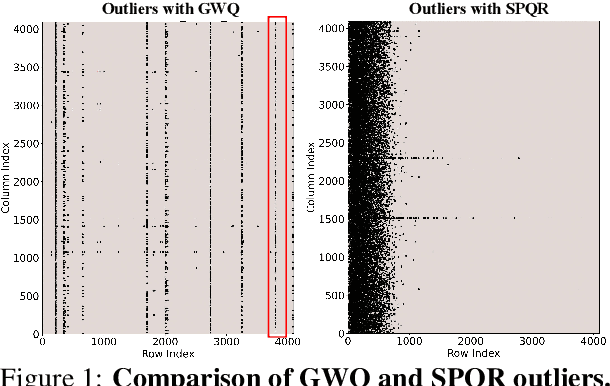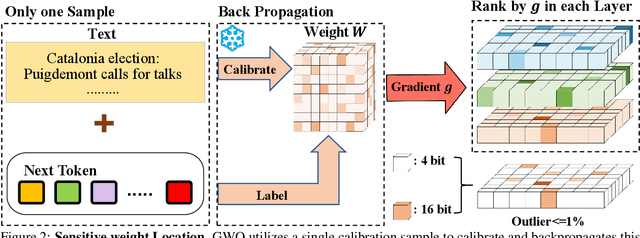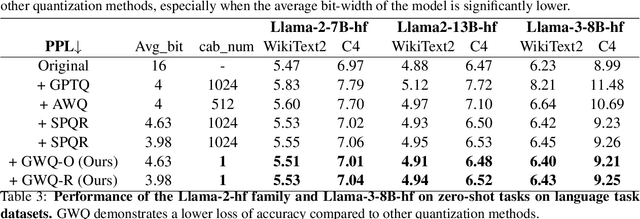Haiyang Liu
Intentional Gesture: Deliver Your Intentions with Gestures for Speech
May 21, 2025Abstract:When humans speak, gestures help convey communicative intentions, such as adding emphasis or describing concepts. However, current co-speech gesture generation methods rely solely on superficial linguistic cues (\textit{e.g.} speech audio or text transcripts), neglecting to understand and leverage the communicative intention that underpins human gestures. This results in outputs that are rhythmically synchronized with speech but are semantically shallow. To address this gap, we introduce \textbf{Intentional-Gesture}, a novel framework that casts gesture generation as an intention-reasoning task grounded in high-level communicative functions. % First, we curate the \textbf{InG} dataset by augmenting BEAT-2 with gesture-intention annotations (\textit{i.e.}, text sentences summarizing intentions), which are automatically annotated using large vision-language models. Next, we introduce the \textbf{Intentional Gesture Motion Tokenizer} to leverage these intention annotations. It injects high-level communicative functions (\textit{e.g.}, intentions) into tokenized motion representations to enable intention-aware gesture synthesis that are both temporally aligned and semantically meaningful, achieving new state-of-the-art performance on the BEAT-2 benchmark. Our framework offers a modular foundation for expressive gesture generation in digital humans and embodied AI. Project Page: https://andypinxinliu.github.io/Intentional-Gesture
Video Motion Graphs
Mar 26, 2025Abstract:We present Video Motion Graphs, a system designed to generate realistic human motion videos. Using a reference video and conditional signals such as music or motion tags, the system synthesizes new videos by first retrieving video clips with gestures matching the conditions and then generating interpolation frames to seamlessly connect clip boundaries. The core of our approach is HMInterp, a robust Video Frame Interpolation (VFI) model that enables seamless interpolation of discontinuous frames, even for complex motion scenarios like dancing. HMInterp i) employs a dual-branch interpolation approach, combining a Motion Diffusion Model for human skeleton motion interpolation with a diffusion-based video frame interpolation model for final frame generation. ii) adopts condition progressive training to effectively leverage identity strong and weak conditions, such as images and pose. These designs ensure both high video texture quality and accurate motion trajectory. Results show that our Video Motion Graphs outperforms existing generative- and retrieval-based methods for multi-modal conditioned human motion video generation. Project page can be found at https://h-liu1997.github.io/Video-Motion-Graphs/
Free-viewpoint Human Animation with Pose-correlated Reference Selection
Dec 23, 2024Abstract:Diffusion-based human animation aims to animate a human character based on a source human image as well as driving signals such as a sequence of poses. Leveraging the generative capacity of diffusion model, existing approaches are able to generate high-fidelity poses, but struggle with significant viewpoint changes, especially in zoom-in/zoom-out scenarios where camera-character distance varies. This limits the applications such as cinematic shot type plan or camera control. We propose a pose-correlated reference selection diffusion network, supporting substantial viewpoint variations in human animation. Our key idea is to enable the network to utilize multiple reference images as input, since significant viewpoint changes often lead to missing appearance details on the human body. To eliminate the computational cost, we first introduce a novel pose correlation module to compute similarities between non-aligned target and source poses, and then propose an adaptive reference selection strategy, utilizing the attention map to identify key regions for animation generation. To train our model, we curated a large dataset from public TED talks featuring varied shots of the same character, helping the model learn synthesis for different perspectives. Our experimental results show that with the same number of reference images, our model performs favorably compared to the current SOTA methods under large viewpoint change. We further show that the adaptive reference selection is able to choose the most relevant reference regions to generate humans under free viewpoints.
Synchronized and Fine-Grained Head for Skeleton-Based Ambiguous Action Recognition
Dec 19, 2024



Abstract:Skeleton-based action recognition using GCNs has achieved remarkable performance, but recognizing ambiguous actions, such as "waving" and "saluting", remains a significant challenge. Existing methods typically rely on a serial combination of GCNs and TCNs, where spatial and temporal features are extracted independently, leading to an unbalanced spatial-temporal information, which hinders accurate action recognition. Moreover, existing methods for ambiguous actions often overemphasize local details, resulting in the loss of crucial global context, which further complicates the task of differentiating ambiguous actions. To address these challenges, we propose a lightweight plug-and-play module called Synchronized and Fine-grained Head (SF-Head), inserted between GCN and TCN layers. SF-Head first conducts Synchronized Spatial-Temporal Extraction (SSTE) with a Feature Redundancy Loss (F-RL), ensuring a balanced interaction between the two types of features. It then performs Adaptive Cross-dimensional Feature Aggregation (AC-FA), with a Feature Consistency Loss (F-CL), which aligns the aggregated feature with their original spatial-temporal feature. This aggregation step effectively combines both global context and local details. Experimental results on NTU RGB+D 60, NTU RGB+D 120, and NW-UCLA datasets demonstrate significant improvements in distinguishing ambiguous actions. Our code will be made available at https://github.com/HaoHuang2003/SFHead.
GWQ: Gradient-Aware Weight Quantization for Large Language Models
Oct 30, 2024



Abstract:Large language models (LLMs) show impressive performance in solving complex languagetasks. However, its large number of parameterspresent significant challenges for the deployment and application of the model on edge devices. Compressing large language models to low bits can enable them to run on resource-constrained devices, often leading to performance degradation. To address this problem, we propose gradient-aware weight quantization (GWQ), the first quantization approach for low-bit weight quantization that leverages gradients to localize outliers, requiring only a minimal amount of calibration data for outlier detection. GWQ retains the weights corresponding to the top 1% outliers preferentially at FP16 precision, while the remaining non-outlier weights are stored in a low-bit format. GWQ found experimentally that utilizing the sensitive weights in the gradient localization model is more scientific compared to utilizing the sensitive weights in the Hessian matrix localization model. Compared to current quantization methods, GWQ can be applied to multiple language models and achieves lower PPL on the WikiText2 and C4 dataset. In the zero-shot task, GWQ quantized models have higher accuracy compared to other quantization methods.GWQ is also suitable for multimodal model quantization, and the quantized Qwen-VL family model is more accurate than other methods. zero-shot target detection task dataset RefCOCO outperforms the current stat-of-the-arts method SPQR. GWQ achieves 1.2x inference speedup in comparison to the original model, and effectively reduces the inference memory.
TANGO: Co-Speech Gesture Video Reenactment with Hierarchical Audio Motion Embedding and Diffusion Interpolation
Oct 05, 2024Abstract:We present TANGO, a framework for generating co-speech body-gesture videos. Given a few-minute, single-speaker reference video and target speech audio, TANGO produces high-fidelity videos with synchronized body gestures. TANGO builds on Gesture Video Reenactment (GVR), which splits and retrieves video clips using a directed graph structure - representing video frames as nodes and valid transitions as edges. We address two key limitations of GVR: audio-motion misalignment and visual artifacts in GAN-generated transition frames. In particular, (i) we propose retrieving gestures using latent feature distance to improve cross-modal alignment. To ensure the latent features could effectively model the relationship between speech audio and gesture motion, we implement a hierarchical joint embedding space (AuMoCLIP); (ii) we introduce the diffusion-based model to generate high-quality transition frames. Our diffusion model, Appearance Consistent Interpolation (ACInterp), is built upon AnimateAnyone and includes a reference motion module and homography background flow to preserve appearance consistency between generated and reference videos. By integrating these components into the graph-based retrieval framework, TANGO reliably produces realistic, audio-synchronized videos and outperforms all existing generative and retrieval methods. Our codes and pretrained models are available: \url{https://pantomatrix.github.io/TANGO/}
Global-Aware Enhanced Spatial-Temporal Graph Recurrent Networks: A New Framework For Traffic Flow Prediction
Jan 07, 2024



Abstract:Traffic flow prediction plays a crucial role in alleviating traffic congestion and enhancing transport efficiency. While combining graph convolution networks with recurrent neural networks for spatial-temporal modeling is a common strategy in this realm, the restricted structure of recurrent neural networks limits their ability to capture global information. For spatial modeling, many prior studies learn a graph structure that is assumed to be fixed and uniform at all time steps, which may not be true. This paper introduces a novel traffic prediction framework, Global-Aware Enhanced Spatial-Temporal Graph Recurrent Network (GA-STGRN), comprising two core components: a spatial-temporal graph recurrent neural network and a global awareness layer. Within this framework, three innovative prediction models are formulated. A sequence-aware graph neural network is proposed and integrated into the Gated Recurrent Unit (GRU) to learn non-fixed graphs at different time steps and capture local temporal relationships. To enhance the model's global perception, three distinct global spatial-temporal transformer-like architectures (GST^2) are devised for the global awareness layer. We conduct extensive experiments on four real traffic datasets and the results demonstrate the superiority of our framework and the three concrete models.
EMAGE: Towards Unified Holistic Co-Speech Gesture Generation via Masked Audio Gesture Modeling
Jan 02, 2024



Abstract:We propose EMAGE, a framework to generate full-body human gestures from audio and masked gestures, encompassing facial, local body, hands, and global movements. To achieve this, we first introduce BEATX (BEAT-SMPLX-FLAME), a new mesh-level holistic co-speech dataset. BEATX combines MoShed SMPLX body with FLAME head parameters and further refines the modeling of head, neck, and finger movements, offering a community-standardized, high-quality 3D motion captured dataset. EMAGE leverages masked body gesture priors during training to boost inference performance. It involves a Masked Audio Gesture Transformer, facilitating joint training on audio-to-gesture generation and masked gesture reconstruction to effectively encode audio and body gesture hints. Encoded body hints from masked gestures are then separately employed to generate facial and body movements. Moreover, EMAGE adaptively merges speech features from the audio's rhythm and content and utilizes four compositional VQ-VAEs to enhance the results' fidelity and diversity. Experiments demonstrate that EMAGE generates holistic gestures with state-of-the-art performance and is flexible in accepting predefined spatial-temporal gesture inputs, generating complete, audio-synchronized results. Our code and dataset are available at https://pantomatrix.github.io/EMAGE/
Multi-Scale Spatial-Temporal Recurrent Networks for Traffic Flow Prediction
Oct 12, 2023Abstract:Traffic flow prediction is one of the most fundamental tasks of intelligent transportation systems. The complex and dynamic spatial-temporal dependencies make the traffic flow prediction quite challenging. Although existing spatial-temporal graph neural networks hold prominent, they often encounter challenges such as (1) ignoring the fixed graph that limits the predictive performance of the model, (2) insufficiently capturing complex spatial-temporal dependencies simultaneously, and (3) lacking attention to spatial-temporal information at different time lengths. In this paper, we propose a Multi-Scale Spatial-Temporal Recurrent Network for traffic flow prediction, namely MSSTRN, which consists of two different recurrent neural networks: the single-step gate recurrent unit and the multi-step gate recurrent unit to fully capture the complex spatial-temporal information in the traffic data under different time windows. Moreover, we propose a spatial-temporal synchronous attention mechanism that integrates adaptive position graph convolutions into the self-attention mechanism to achieve synchronous capture of spatial-temporal dependencies. We conducted extensive experiments on four real traffic datasets and demonstrated that our model achieves the best prediction accuracy with non-trivial margins compared to all the twenty baseline methods.
Exploring the Mutual Influence between Self-Supervised Single-Frame and Multi-Frame Depth Estimation
Apr 25, 2023Abstract:Although both self-supervised single-frame and multi-frame depth estimation methods only require unlabeled monocular videos for training, the information they leverage varies because single-frame methods mainly rely on appearance-based features while multi-frame methods focus on geometric cues. Considering the complementary information of single-frame and multi-frame methods, some works attempt to leverage single-frame depth to improve multi-frame depth. However, these methods can neither exploit the difference between single-frame depth and multi-frame depth to improve multi-frame depth nor leverage multi-frame depth to optimize single-frame depth models. To fully utilize the mutual influence between single-frame and multi-frame methods, we propose a novel self-supervised training framework. Specifically, we first introduce a pixel-wise adaptive depth sampling module guided by single-frame depth to train the multi-frame model. Then, we leverage the minimum reprojection based distillation loss to transfer the knowledge from the multi-frame depth network to the single-frame network to improve single-frame depth. Finally, we regard the improved single-frame depth as a prior to further boost the performance of multi-frame depth estimation. Experimental results on the KITTI and Cityscapes datasets show that our method outperforms existing approaches in the self-supervised monocular setting.
 Add to Chrome
Add to Chrome Add to Firefox
Add to Firefox Add to Edge
Add to Edge